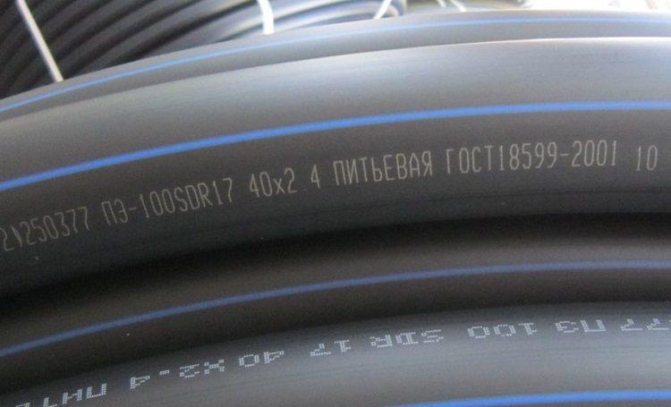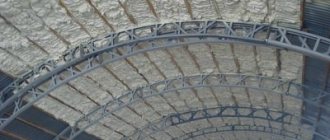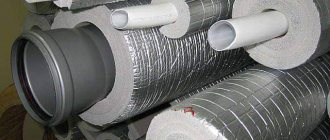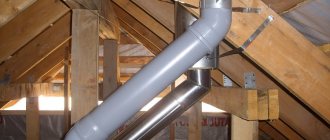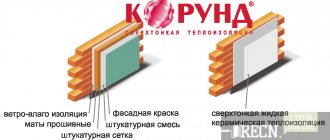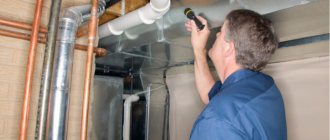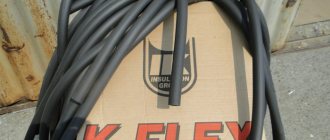Features of the choice of thermal insulation for pipes
Thermal insulation is used both for centralized heating mains and internal heating networks in order to reduce heat loss. When choosing thermal insulation, it is necessary to take into account the diameter of the pipes, the temperature of the coolant and the operating conditions. The type of insulator that will be used depends on the diameter of the pipes. It can be rigid molded cylinders, semi-cylinders, and soft mats in rolls.
Insulation of heating pipes of small diameter can be performed using cylinders, half-cylinders (equipped with grooves that create a convenient and quick installation on pipes), also using segments made of polymer or mineral wool heat-insulating materials. They have a very high thermal resistance. In addition, they have a low degree of water absorption, resistance to mechanical damage and a strict geometric size. Consider the areas of application of the most popular materials for thermal insulation.
Which pipes to choose
Steel and cast iron pipes have long been considered irrelevant. They are easily susceptible to corrosion and external factors, although mechanical strength is considered their distinguishing feature.
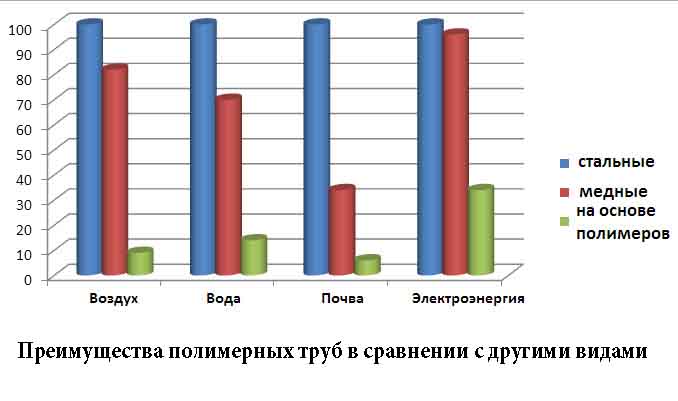
Advantages of polypropylene pipes
Nowadays, tough conditions are imposed on laying a pipeline underground, including: • simplicity and reliability; • strength in relation to mechanical stress; • chemical inertness; • simple operation; • no need for frequent repairs or replacement of defective parts. All these requirements are ideally suited for polypropylene pipes used in various fields. They show high performance and efficiency in absolutely any conditions.
What is the difference between using polypropylene pipes?
The most optimal option for using polypropylene pipes is laying a sewer system for a summer cottage, supplying water for domestic needs, for watering a garden or a greenhouse. If we talk about the positive aspects of using such pipes, then it is worth mentioning: • their steadfastness in relation to corrosion and other mechanical influences; • simplicity of their installation, which does not require much time; • the possibility of their use for the supply of drinking water; • their reliability and durability.
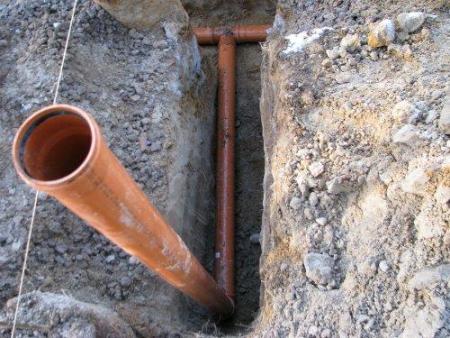

laying of a water supply system from polypropylene pipes in the ground


polypropylene pipeline laying
Backfilling the ditch
Ditch filling is started after checking the heating system in operation - if the pressure test of the circuit reveals flaws in its tightness, they will need to be removed.
Backfilling of the ditch is a serious stage of work, the uniformity of the distribution of loads and the durability of the pipeline section into the ground depend on the accuracy of its execution.
Ditch filling begins with laying soft plastic soil on both sides of the pipe (in the sinuses). This is done in the same way along the entire length of the pipeline, not allowing its displacement on the sides. The soil laid on both sides is carefully compacted, after which the pipeline is backfilled with a protection layer of at least 15 cm from the same material along the entire length and width of the ditch in accordance with the requirements of SNiP. The compaction of this layer is performed to a small extent - this is a necessary requirement for the formation of a strong protective vault from the ground above the pipe, which rests mainly on the sinuses on both sides of the pipe.
After the completion of the compaction of the protection layer, the ditch is completely covered with soil removed during excavation, removing large stones from it.Backfilling must be done equally along the entire length of the ditch, preventing the formation of pipe sections with a significant difference in the vertical load from the soil.
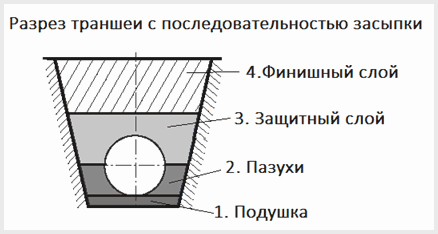

An equally growing load from the backfill will be taken mainly by the protective soil vault above the pipe, and the final value of the compressive force for the pipe is not terrible - it is designed for it.
If the ditch is filled with separate sections, then the difference in the vertical load on the filled and open sections of the pipeline will lead to the appearance of tensile forces, which the pipe resists worse.
Installation of a heating system in the ground
To connect the heating system, you must first fulfill all the requirements. This is a complex technological process. In this case, you should deal with the laying of pipes in the ground with an individual approach to each client.
To carry out the installation, the following conditions are required:
- - it is necessary to open an order to perform work;
- - prepare a project;
- - conclude an agreement with the technical supervision service;
- - study of the work area;
- - measuring the depth and width of the ditch for laying pipes;
- - Carrying out directly installation work;
- - testing and commissioning.
The listed conditions are necessary for the correct execution of documents of the established form in the relevant authorities. This must always be done first, before providing services for the installation of pipes for the heating system into the ground.
- Heating mains device
When it comes to laying thermal communications for a private house, then, as a rule, the problem is mentioned, which is that the source ... - Sale of installation of pipes for water supply
The largest selection of pipes for water supply is on sale, and services for their installation are also provided. Sale of installation of pipes for water supply ... - Installation of pipes from the well to the house
Fléhalen pipes are an excellent solution for creating a pipeline in a private house. The product is of high quality and durable. But to buy it at ... - Flexalen sale from dealer
We offer modern pipes for heating and water supply of Fléhalen to buy inexpensively in Moscow. We are direct suppliers of Flexalen pipes, we sell fl ... - Boiler room at home
The boiler house solves the problem of warmth and comfort in a home with maximum amenities. The heat transfer of the Flaxalen system effectively spreads all this to the home ... - Replacement of private water pipes
Replacing private water pipes is a rather complicated procedure, which is better to be entrusted to professional specialists from Heating Water LLC. Sun ... - Buy flexalen equipment with installation
This article will describe what you need to know about the Flaxalen brand. The advantages of this brand of equipment will be described below, and why it is worth making ... - Sale flexalen Shatura
You can buy flaxalen on our official website without any difficulties. Sale of fléhalen in Moscow is carried out by our company with the provision of professional ... - Installation of water supply
Plumbing installation requires the use of quality material. One of the best options is the products of the FLEXALEN company. The pipes produced by the company have double ... - Sale of pipes for heating
On sale you can find flaxalen pipes in three versions: A single-pipe pipeline is a high-quality insulated structure, ...
Installation of heating underground
In some cases, it is required to lay heating pipes in the ground, for example, at some distance from the boiler room to the heated room. Before laying heating pipes underground, you will have to solve two problems at once:
On a pipe laid with a floor with earth, the soil layer and everything that is on the surface presses. Therefore, in order to protect the system, sleeves are used. In this capacity, a PVC sewer pipe with a diameter of 110 mm is perfect.
Before laying the heating pipes underground in the sleeve, they need to be insulated, despite the fact that the system is laid below the level of soil freezing. At the same time, heat loss is still significant. For insulation, mineral wool or foam covers are used. In addition, pipes are produced that have a foam insulation layer and a protective plastic sheath. They are specially designed for underground installation.
When organizing an individual water supply at home with a water intake from a well or a well, it is necessary to take measures for the normal operation of the water supply system in the winter in order to prevent water from freezing in the pipe. Therefore, the question of how to insulate a water pipe in the ground with your own hands is relevant for all users of their own water supply line. In order to insulate a pressure water pipe underground, it is necessary to calculate and select the most optimal insulation option and correctly install it in compliance with the technology.


Fig. 1 Map of soil freezing levels
Underground laying of heating pipes


Heating pipes with external frost protection
In a private house, it may be necessary to lay heating pipes underground. Such a scheme is used for a stand-alone boiler room or for supplying a heating main to other buildings - a garage, outbuildings, etc.
For the correct laying of heating pipes underground, the following rules must be observed:
- The main line can be located above the level of freezing of the soil, but then protection against the formation of ice plugs should be provided. At the same time, heat losses will increase;
- The coolant supply cannot be at the same level or below the return pipe;
- Protection against possible soil pressure. If it is not foreseen, there is a possibility of deformation or destruction of the pipeline.
The correct heating pipe is preselected for laying in the ground. It must without fail have external frost protection. Depending on the soil temperature in winter, this can be passive or active insulation.
To improve the thermal insulation qualities, you can fill the mounting trench with expanded clay on top of the sand layer.
Passive protection of heating pipes
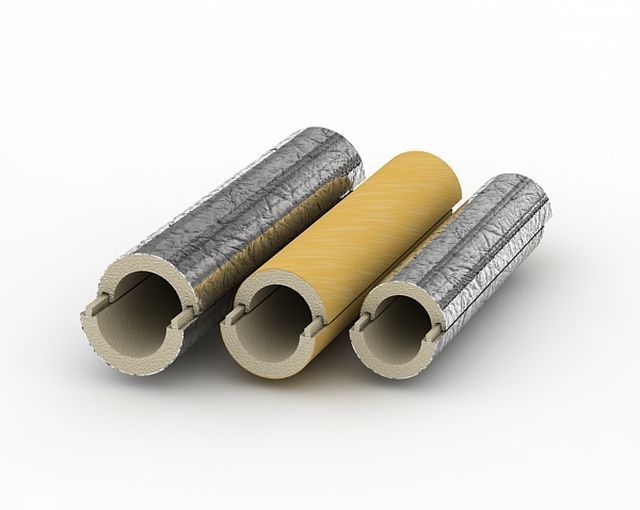

Insulation for pipes
It is a protective cocoon (shell), leveled over the line. It is best to purchase ready-made heating pipes for laying in the ground. A multilayer "cake" is placed on top of the plastic line. It not only protects against the effects of negative temperatures, but also shifts the "dew point". This reduces the likelihood of condensation on the pipeline.
Taking into account the rules for laying pipelines for heating systems, the following types of heat-insulating materials can be distinguished:
- Basalt wool... In addition to good thermal insulation qualities, it is hygroscopic, i.e. moisture from the pipe surface will be removed through the cotton wool;
- Foamed polyethylene... Recommended for use in combination with mineral wool. It forms the primary heat-insulating layer, and the basalt insulation protects the line from the effects of low temperatures;
- Expanded polystyrene shell... The best option for laying heating pipes at a shallow depth. Sealing is ensured with the help of special locks, which, after installation, are insulated with tape.
However, unlike laying heating pipelines in the floor, it is necessary to constantly ensure a high temperature of the coolant. Even the best passive protection with insulation will not be able to provide the formation of ice plugs.
For regions with extremely low temperatures, the special Uponor Ecoflex Thermo Twin pipe can be used for external heating. In addition to reliable thermal insulation, it is equipped with a heating cable.
Mineral wool
Insulating materials using mineral wool are highly effective thermal insulators. They are used in a wide variety of conditions. Mineral wool heat insulators can withstand temperatures up to 650 ° C without losing their heat insulating and mechanical properties. At the same time, they do not lose their shape and have a high chemical resistance to oil, solvent, acid, alkali.They are non-toxic, and due to a special impregnation, they have a very low degree of moisture absorption. (See also: Hot water floor heating)
Advice! Mineral wool is good for protecting the heating network pipeline and hot water pipeline in residential and public buildings, domestic premises, as well as pipelines, the surface of which is exposed to heating, for example, chimneys.
Types of mineral wool
Stone wool - made from alloys of basalt rocks. It was described above.
Installation of a chimney for a gas boiler
Installation of a chimney for a gas boiler begins with cutting an exhaust hole, the size of which depends on the diameter of the chimney pipe
Fiberglass
Glass wool has an average thickness of up to 3-4 microns and 1550-200 mm. Thermal insulation materials made of glass staple fiber have a low density and application temperature (up to 180 ° C). Such materials are recommended to be used for above-ground pipelines, for example, heating networks. Therefore, fiberglass is used in a more limited area. High-quality fiberglass is characterized by high vibration resistance, biological and chemical resistance, as well as a long service life. (See also: Polypropylene pipes for heating)
Egor Guest
It is more convenient to use ready-made insulation. We found polyethylene foam for pipes 13mm (this is the norm for hot water supply).
Then the finished pipe insulation was selected so that it was put on the first thermal insulation. There can be any number of such layers.
If there is an air gap between the first and second insulation, this is good
It is important to glue the seams of the last layer of insulation with reinforced tape
You can wrap with roll insulation, but it is easier to wrap not in two layers of 5 mm, but in one layer of 1 cm.
The foil inside will not work. she needs a gap, in my opinion, 20mm. It can be oriented outward or simply wrap the last layer with foil tape (this is done when installing air conditioners).
Insulation of heating pipes is a mandatory stage in the installation of the entire system. This is especially true for pipe sections located outside the residential area (for example, outdoors) and most exposed to adverse weather conditions.
The insulation material serves as a protective layer that maintains a given temperature regime, prevents the formation of condensation and slows down the metal corrosion process.
Timely insulation of heating pipes can significantly reduce the percentage of heat loss and protect pipes from deformation in the face of sudden changes in weather conditions.
Heat loss on the way from the boiler to the radiators can vary between 5-15%. Accordingly, in order to achieve the optimal temperature in the house, the owners have to significantly increase the power of the boiler and pay the costs out of their own pockets.
Insulated pipes for heating allow you to forget about this problem for a long time.
In this case, the coolant circulating through the pipes cools down much more slowly, does not change its temperature and does not crystallize at the lowest temperatures.
Vertical pipeline laying
Schemes with a vertical arrangement of highways are very popular among residents of multi-storey cottages.
This is due to the peculiarities of the functioning of such schemes:
- The coolant is heated in the boiler and rises up the line. After that, he goes down through all the available risers to the radiators;
- From these radiators, the coolant returns back to the boiler, while, in the case of two lines, the movement back is carried out already along the horizontally located elements.
I must say that the supply branch is also horizontal.The scheme got its name - vertical or top - for the simple reason that the coolant comes from above, which can be seen in the image below:
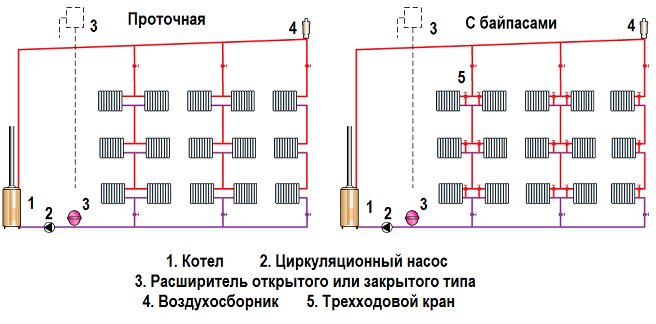

Consists of the following elements:
- Heating boiler;
- Circulation pump (as a rule, it is available, but it may not be);
- Expansion tank of open or closed type (if there is a pump, then a closed-type membrane tank is used, if there is no pump, that is, natural circulation, then the tank is of an open type);
- Vertical and horizontal branches;
- Batteries;
- Shaped elements.
Principle of operation
The principle of operation of all vertical structures is quite simple. From the heating element, the coolant enters the expansion tank. The movement takes place along the riser.
The expansion vessel should be located at the highest point. Such a container serves to normalize and create pressure.
Further from the tank, there is a branch that is called the feed, or in this case, the adjustable one. This line goes to each battery. Thus, from the expansion tank, the heated coolant enters the batteries through this line.


Here she gives up her warmth to the environment. At this time, denser cold water pushes heated water out of the boiler. This creates the movement of the coolant. Thus, slightly cooled water from the batteries enters the return line, which leads directly back to the boiler.
Today, almost all such schemes are equipped with a circulation pump, which forcibly forces water to move along the highways. This leads to faster heat transfer, and therefore increases the efficiency of the entire structure.
A big advantage of the upper location of the branches is that such an arrangement allows them to heat multi-storey buildings.
In addition, no one forbids, as in the previous case, putting its own shut-off valve on each individual radiator. In this case, there is no need to cut in separate lines, since the design already provides for the parallel supply of all batteries with a coolant.
Burying pipes
The first method of deep burying pipes is the oldest and most proven, but it can not always provide the required level of protection. The bottom line is that the pipeline is laid just below the depth of soil freezing, which is due to the climatic features of a particular area. In the layer of earth below the freezing level, the temperature is practically constant.


At first glance, it may seem that with minimal costs it is possible to protect pipes from cold weather, but in fact, not everything is simple because it is not always possible to achieve the desired depth. There can be quite a lot of weighty reasons for this - from the significant labor intensity of the work to the peculiarities of the soils.
In some cases, deepening even 1 meter can be problematic. If you need to go deeper even more, then the complexity of the work will become an order of magnitude higher.
When choosing a method of insulation, do not forget about one more important point. If a sewage system breaks down, even if not due to cold weather, its repair will be quite expensive, since to detect a defect, you will first have to dig out the pipe, and then bury it again
Preliminary installation work
Preliminary work before the direct installation includes the development of the project. It is worth paying attention to the state and type of soil, its looseness, the area of the territory where the laying will take place. Then, already, starting from this, it is necessary to decide on the type of gasket. There are traditional, trench and trenchless.


laying of pipelines from polypropylene pipes
The traditional method is used most often. To begin with, the territory is marked out, a trench of the required size is being prepared.You will need a line and a shovel.
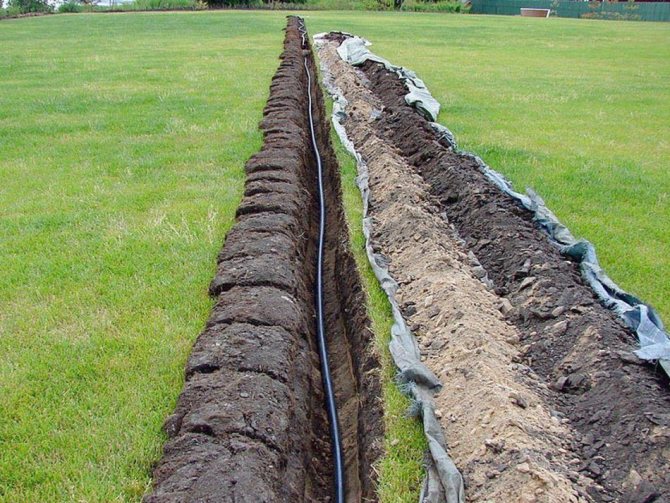

laying polypropylene pipes in the ground
As soon as the trench has been dug, its bottom is covered with sand and compacted. The trenchless method is resorted to when there are buildings or paths on the territory that cannot be harmed. There is a way in which it seems possible to lay new pipes without affecting the old ones. But this requires special construction equipment.


examples of work on laying polypropylene pipes
Conditions for conducting according to regulatory documents
Any pipeline is laid in accordance with certain standards. What you need to know when laying polypropylene pipes?


laying of water supply pipelines from polypropylene pipes
The freezing point of the soil must be taken into account. As a rule, it is located at a depth of 1.4 meters. If the pipes are laid at a lower level, then in winter you will not be able to use them, since the water will simply freeze. The laying of pipes is influenced by the fact whether there are any buildings nearby (route, highway, various networks, etc.). If you yourself are not completely sure, you can always turn to a construction company for help.


laying of the heating system from polypropylene pipes
When laying polypropylene pipes, the following points must be observed: 1. First of all, a trench is prepared, whose diameter must exceed the diameter of the pipe itself. 2. Sand 50-100 mm thick is poured onto the bottom and then compacted. 3. The laying must start from the building. 4. To connect the individual elements to each other, you must use a special lubricant. 5. If work is underway to lay the sewerage, but there must be a slope of two cm for each meter of the route. 6. When the pipeline is laid, it should be covered with sand and tamped on the sides. 7. At the end, the polypropylene pipes must be connected to a common line.
What problems can you face during installation?
The structure of the soil may not allow digging a trench to the desired depth. Since the soil tends to freeze in winter, this can damage the pipes. Or on the site you may come across buildings that are simply impossible to get around.
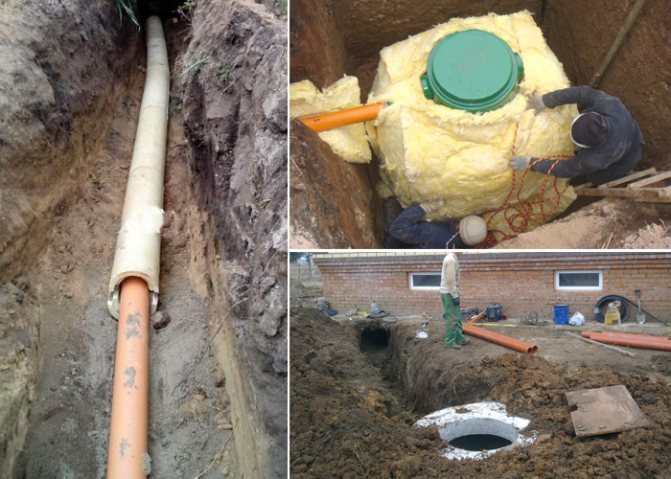

laying of an external water supply system from polypropylene pipes
But there are methods that can help you cope with these difficulties. 1. If the soil is too loose or hard, a puncture will help. In this case, the steel pipe is laid first, and then a polypropylene pipeline is already installed in it. 2. If the ground freezes, you can use a heating cable along the entire route. This, of course, is a costly business, but it's better than constantly repairing burst pipes later. 3. If there is an inviolable structure on the way of the pipeline, then you can always resort to the trenchless method of laying.
Trenchless laying
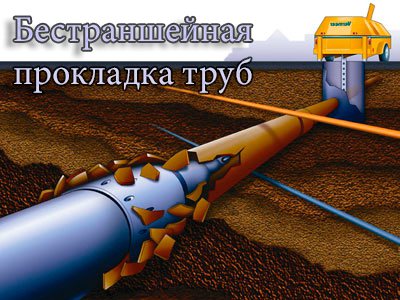

Trenchless pipe laying
This method has its undeniable advantages. • it will take less time and money; • minimal harm to the environment; • there is no need to destroy green spaces and destroy asphalt.
To date, it is known about the use of the following methods. • reorganization. It is the process of replacing old pipes with new ones. The works are performed in two methods: • relining. In this case, a new one is pulled into the old pipe. • renovation. Renovation is a technology when an old pipe is destroyed at the same time as the laying of a new one. Used only when the throughput does not hold up.
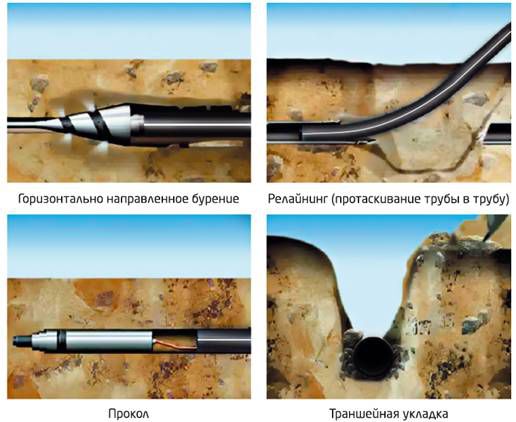

polypropylene pipe laying technology
If the pipe diameter does not exceed 150 mm, then piercing is used. The work must be carried out in several stages. • pits are dug on both sides of the track; • in one place a hydraulic jack that pushes a small steel pipe with a steel tip; • during pushing the pipe starts to build up and a polypropylene pipe is inserted into it; • when the puncture is finished, the pipeline is connected to the required system.
This method is convenient when laying polypropylene pipes over a short distance. For example, under a house, a highway, a vegetable garden, and so on.
Heating pipes with an electric cable
Obviously, it is possible to insulate sewer pipes by burying them to a sufficient depth only in the outer areas.However, there are other areas located both on the street and in rather poorly heated premises. For such areas, you can use a special heating electrical cable, laid along the most important nodes and connections. The result of the work performed will be constant heating, which protects the sewage system regardless of the weather.


However, this method has a couple of disadvantages. First of all, electricity consumption increases, especially in the case of heating up rather long pipelines. Also, there is a dependence on the operation of electrical networks. Of course, in the event of a power outage, the generator will start working, however, this also costs a lot of money.
Why isolate
If the pipe is laid outside the building, it (and the environment flowing inside) can be adversely affected by moisture and low temperatures. In addition, some materials (polymeric) deteriorate faster and lose their quality when exposed to direct sunlight.
Also, the pipeline can be damaged by actions (intentional or unintentional human).
It is preferable to lay pipes in the ground for the following reasons:
- To prevent the negative factors mentioned above.
- In order not to create a communications network (which will take up space, interfere with the passage / driveway) on the surface.
When laying a line underground, the following hazards remain relevant:
- Possibility of freezing of the liquid flowing inside.
- The possibility of corrosion of the pipe itself is due to moisture.
The first factor is relevant in winter: the depth of soil freezing in most Russian regions reaches (and exceeds) 1 meter. That is, in order to prevent the flowing medium from freezing in frost, pipes should be laid in the ground deeper than this indicator.
This is often inconvenient: this complicates the further maintenance of the line (if it is necessary to check or repair it, you will have to dig a deep trench), and the cost and timing of excavation work during laying increases.
On the dangers of lack of isolation
Water supply and sewerage pipes are laid in the ground - both municipal (going from and to apartment buildings) and for private houses and various industrial buildings. It is necessary to use insulation in both cases - since water flows inside these lines.
Moreover, it freezes very quickly - in less than an hour, an ice plug forms inside.
Since the pipeline is laid in the ground, to eliminate it, you will have to dig a trench, look for a frozen place and warm it up. And all this - in the cold. Moreover, the sewerage or water supply will not work in the house (depending on which line "sits down").
In addition to the troubles that the sewerage or water supply system stops working in the house, when an ice plug occurs, there is also the likelihood that the pipe will burst. This happens because moisture expands when it freezes, that is, ice will take up more space than water. As a result, the pipe walls may not be able to withstand.
Eliminating this problem is even more difficult and less enjoyable than steaming a frozen area. In winter, in cold weather, you will not only have to dig a trench (and not a small one, but along the entire line of the pipe - to find the damaged part) - but also repair the pipe itself. This is often only possible by completely replacing the cracked segment.
What pipes are suitable for underfloor heating
Plastic pipes for screed laying
Naturally, modern warm floors are mounted from plastic, only it can be different and has different characteristics. Screed heating in a private house replaces traditional radiator systems. To select a material, you need to determine the selection criteria:
The laying of heating pipes in a private house under the screed is carried out only in whole sections, without connections. Based on this, it turns out that the material should bend and the direction of the coolant flow should change without the use of fittings. Products made of single-layer polypropylene and polyvinyl chloride do not fall under this characteristic;
resistance to heat.
All polymer pipes for heating external and hidden gaskets can withstand heating up to 95 degrees, moreover, as the temperature of the coolant rarely exceeds 80 degrees. In a warm floor, the water heats up to a maximum of 40 degrees;
For laying heating pipes in the floor screed, only reinforced products are used, they are also called metal-plastic. Although the layer of reinforcement is not only metallic. Each material has a certain thermal elongation. This coefficient indicates how much the circuit is lengthened when it is heated by one degree. The value is determined for a plot of one meter. Reinforcement is needed in order to reduce this value;
After laying the heating pipes in the floor screed, there will be no access to them. In the event of a leak, you will have to dismantle the floor - this is a sawing and laborious process. Manufacturers of polymer pipes give a 50-year guarantee for their products.
Reinforced polymer pipes consist of five layers:
- two layers of plastic (inner and outer);
- reinforcement layer (located between polymers);
- two layers of glue.
Thermal linear expansion is the property of a material to increase in length when heated. The coefficient is indicated in mm / m. It shows how much the circuit will increase when it is heated by one degree. The coefficient value indicates the amount of elongation per meter.
PEX pipe, aluminum reinforced
We should immediately mention the types of reinforcement. This could be:
- aluminum foil (AL), thickness 0.2–0.25 mm. The layer can be solid or perforated. Perforation is the presence of holes, like in a colander;
- fiberglass fibers are thin fibers of plastic, steel, glass or basalt. FG, GF, FB are designated in the marking;
- ethylene vinyl alcohol is a chemical element that changes the composition of plastic. Marked by Evon.
Before laying heating pipes in a private house, you should make sure that they have a layer of reinforcement with aluminum foil or ethylene vinyl alcohol. Since one of the requirements when choosing a material is the elasticity of the contour. Products reinforced with glass fiber cannot be bent; fittings and couplings are used to change the direction of the coolant flow, which in our case is unacceptable.
Let's look at the types of materials used for the production of metal-plastic pipes:
polypropylene. Such products are marked with PPR / AL / PPR. Thermal linear expansion is 0.03 mm / m;
cross-linked polyethylene. It differs from conventional low and high pressure polyethylene in that it undergoes an additional production step called crosslinking. On it, the number of bonds between molecules increases, thereby giving the product the necessary characteristics. It is marked PEX / AL / PEX and has a coefficient of thermal linear elongation of 0.024 mm / m, which is less than that of propylene.
Separately, we will consider products made of cross-linked polyethylene reinforced with ethylene vinyl alcohol, since it is best to lay such heating pipes in the floor. They are labeled PEX / Evon / PEX. This method of reinforcement allows you to kill two birds with one stone. Firstly, it reduces the linear expansion of the material to 0.021 mm / m, and secondly, it creates a protective layer that reduces the air permeability of the pipe walls. This figure is 900 mg per 1 m 2 per day.
The fact is that the presence of air in the system not only leads to cavitation processes (the appearance of noise, hydraulic shocks), but also provokes the development of aerobic bacteria.These are microorganisms that cannot exist without air. Their waste products settle on the inner walls, and the so-called siltation occurs, while the inner diameter of the pipe decreases. For polypropylene pipes with aluminum foil reinforcement, the air permeability of the walls is zero.
Rules for laying heating pipes


Water underfloor heating, as an alternative to the classic heating scheme in a wooden house
In the process of designing a system, you need to take into account the rules for laying heating pipelines. They describe in detail the characteristics of transport routes, both in-house and for district heating.
The main regulatory document currently is SNiP laying of heating pipelines. It is best to use the current edition, and in particular SNiP 41-01-2003. In addition to the requirements for the organization of district heating, it provides recommendations for laying pipelines for autonomous heating.
Regardless of whether heating pipes are laid in a wooden house or built of bricks, the following rules must be observed:
- The coolant temperature should not exceed 95 ° С, and the nominal pressure should not exceed 1 MPa;
- It is impossible to lay pipes in unheated attics, cellars and underground if the design temperature in winter is below -40 ° С;
- Compliance with the optimal speed of movement of the coolant, depending on the noise level. The average indicator for autonomous systems is 0.5-0.7 m / s. It directly depends on the diameter of the pipeline, the power of the circulation pump and the heating boiler;
- Hidden laying of heating pipes in skirting boards or in wall grooves is carried out taking into account the properties of building materials. The thermal effect from the surface of the line should not change the appearance or affect safety;
- Pipe material: metal, plastic or metal-plastic. In this case, only steel pipes must be installed at the outlet and inlet of the boiler. Their length must be at least 0.5 m.
These are general recommendations, the observance of which is mandatory for any method of organizing heat transport lines. But it is important for the consumer to know the intricacies of the technology by which heating pipes are laid in the floor or walls.
In a gravitational heating system, the slope of the pipes must be observed. It should be at least 0.3 cm per 1 lm. The same applies to the return line to the boiler.
Factors affecting heating pipes in the ground
A heating pipe buried in the soil is prone to the same influences as an external pipeline, plus factors due to deepening:
- internal pressure of the heat carrier, causing annular and elongated tensile stresses in the pipe section;
- the temperature of the heat carrier is a factor, in addition to thermal influence, which also causes stresses in the pipeline;
- soil temperature - in winter, taking this moment into account is very important;
- soil deformations - any displacements (settlement, shear, etc.) affect the pipe;
- the stress of the preliminary bending of the pipeline - the profile of the ditch often repeats the local relief;
- vertical load - the influence of the weight of the trench backfill layer;
- repelling action of the soil on the walls and bottom of the pipeline - resistance to vertical load;
- vibration loads - from passing vehicles, excavation works in the neighborhood, etc .;
- moisture - precipitation and groundwater;
- the influence of chemical substances - compounds in the composition of the soil and the heat carrier;
- biological factor - bacteria, decomposition.
Likewise, laying the pipeline in the soil should be carried out taking into account all of the above factors and solving the problem of how to make heating pipes warmer in the ground.
Concealed laying of heating pipes
Pros and cons of hidden gasket
The undoubted advantage of this method is that there is no need to be afraid that during the design of the room, the heating pipes will not be able to harmoniously fit into the interior.
Disadvantages of flush mounting:
- Labor intensity.
- The presence of heat loss, since even with high-quality pipe insulation, part of the heat is spent on heating the structure, which simultaneously performs protective and decorative functions.
- Complexity of maintenance associated with the need to dismantle protective and decorative structures to access emergency areas;
- High price due to the need for more material.


Hidden laying of heating pipes in the floor is carried out before the screed is poured
Trenchless pipeline laying methods
There are technologies for laying a pipeline in the ground without trenching.
Such methods are aimed at:
- reduce the volume of earthworks - gain in time and costs;
- to minimize damage to infrastructure - less costs for the restoration of decorative and road surfaces, unforeseen damage to highways;
- lay pipes in a straight line, without bending around obstacles of low difficulty;
- to minimize damage from earthworks to the environment.
Today, the industry uses the following trenchless methods:
- reorganization;
- piercing.
Sanitation
- this is the replacement of old pipes with new ones, which, in turn, is done in two ways: by relining and by renovation.
Relining
It is based on broaching a new polymer pipe of a smaller diameter inside the working pipeline while preserving the old one as a protective shell.
Renovation
- installation of a new pipe to replace the worn-out with the destruction of the old one, the fragments of which will also protect the new line from external damage.
Piercing (punching)
- this is a connection of two pits dug to the required depth with a puncture made at a certain wall height.
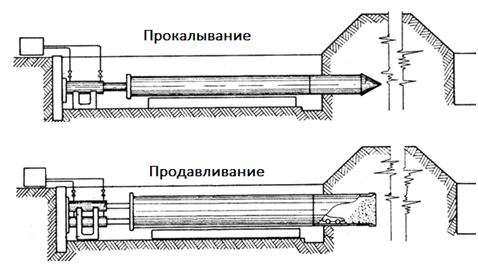

Of the listed methods, we will execute only the relining method in everyday life. A cable is inserted into one end of the old pipe and pushed until it exits the other end. Then a new whip is attached to the cable and pulled back. The applicability of this method depends on a number of factors:
- the state of the lumen of the old pipeline;
- diameter of the new pipe;
- the flexibility of the new lash;
- the length of the section being repaired;
- the ratio of the diameters of the old and new pipeline.
With a favorable combination of the above factors, the technical execution of the installation of a new pipe is not difficult. However, all this is applicable to broaching a new line without thermal insulation, and the condition of the insulation of the old pipe is unlikely to be satisfactory. Since it is not possible to insulate the heating pipes inside the old line, the method loses its attractiveness when applied to heating.
Therefore, when installing heating pipelines with burial in the ground in private housing conditions, it is impossible to do without digging a trench or, at least, alternatively laying the pipe on the ground with backfill.
Today, by design, all heating systems can be divided into many types and types - the classification is very diverse and has many parameters. Among others, the type of wiring is also distinguished.
The layout can be horizontal or vertical. Depending on the type of installation chosen, the composition of the heating scheme may vary, but more on everything below.
Ordering services in the company
It is easy to issue an application for the performance of work by calling +8(495) 211-17-01 to the company LLC “Heating Water”. If it is necessary to carry out work on the installation and adjustment of equipment for the heating system, then qualified specialists will be able to:
- - competently advise on technical issues;
- - make an estimate correctly;
- - work out the pipe laying scheme;
- - to organize the work on the installation of the heating system.
The order of services is carried out by the client by phone by appointment.The pipes required for the heating system can be selected by specialists in this industry. It is important to consider that they will be in the ground, therefore it is important to observe the service life depending on the conditions. If there is a developed pipe distribution scheme, the masters will necessarily take into account all the wishes of the client.
Bottom wiring diagrams
As already mentioned, pipe laying can be carried out in two ways - vertically or horizontally. In the first case, such a layout is called the top, and in the second, the bottom. Both can be used for the device. There are restrictions only for multi-storey buildings. Often, the second floor heating system consists only of a warm floor.
So, all heating systems of a private house with lower wiring can be of two types:
- Single-pipe, that is, contain in its composition only the supply pipeline, which is at the same time reverse;
- Two-pipe - with separate supply and return lines.

